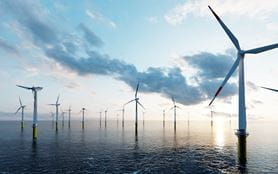Trade policy is vital for sustainability, but questions over legality remain
Related people
Headlines in this article
Related news and insights
Publications: 21 March 2024
Publications: 21 March 2024
Publications: 21 March 2024
Publications: 21 March 2024
Trade policy is increasingly recognised as a key route to achieving global sustainability goals. Commitments to reach Net Zero require vast amounts of international investment to build green infrastructure and adapt existing systems. Free trade agreements can remove barriers to trade in sustainable products and technologies, while subsidies and tariffs can be used to incentivise the transition.
However, the legality of some of these measures is hotly debated, including whether they are compliant with international law. Trade and sustainability were also key topics of discussion at COP28, including the possibility of a more global approach to sustainable trade policy.
Trade policy measures in action
Trade policy measures are already being used to further the sustainability agenda and the trend is set to continue. To take one example, tariffs can be imposed on environmentally harmful products and removed to bolster trade in those that are environmentally positive. Currently, the UK’s Global Tariff, which applies to most goods imported into the UK, unilaterally removes tariffs on various items that benefit the environment or conserve energy and natural resources such as thermostats and heat pumps.
Meanwhile, the Agreement on Climate Change, Trade and Sustainability, a proposed agreement between Costa Rica, Fiji, Iceland, New Zealand, Norway and Switzerland, will remove tariffs on more than 300 products related to clean energy generation and environmental monitoring and protection. It will also develop principle-based guidelines for voluntary eco-labelling programmes and develop environmental services.
At the same time, the EU and the U.S. continue to negotiate the Global Arrangement on Sustainable Steel and Aluminium, which seeks to impose tariffs on carbon-intensive imported metals. Similarly, the EU’s carbon border adjustment mechanism (CBAM) will impose a carbon price designed to level the playing field between certain carbon-intensive products originating in the EU and equivalent products imported from third countries with less stringent emissions regulations (see our latest article on the EU CBAM here). The price of EU CBAM certificates, which in-scope businesses will have to purchase and surrender in proportion to the embedded emissions of certain goods imported into the EU, will reflect the average weekly carbon price under the EU emissions trading scheme. More recently, the UK announced in December 2023 that it will be introducing its own CBAM to be implemented by 2027 (see our article 'The UK gives the green light to a UK CBAM and consults on the UK ETS').
Subsidies are also being deployed by countries on a vast scale. The Biden administration’s Inflation Reduction Act directs nearly USD400 billion of federal funding to clean energy through a mixture of tax incentives, grants, and loan guarantees. Clean transportation, as well as clean electricity and clean transmission, are among the beneficiaries. Jurisdictions such as Japan are following suit (see our article 'Japan unveils green subsidy programme – can it compete with the U.S. Inflation Reduction Act?).
Non-tariff trade measures such as technical regulations can also set emissions targets for producers or support the adoption of energy-efficient technologies.
The politics of free trade agreements
Negotiations relating to free trade agreements (FTAs) increasingly centre on the inclusion of environmental considerations (see our previous article 'International trade law and climate change: a virtuous circle?'). FTAs play an important role in opening up international markets, thereby facilitating the flow of goods and services, and countries are progressively focusing on “green trade”, which includes the trade of environmentally-positive goods and services, as noted by the UK’s Green Trade Report.
One example is the 2022 UK-New Zealand FTA which contains a number of environmental provisions. Notably, it seeks to liberalise tariffs on the most comprehensive list of environmental goods in an FTA, including electric vehicles and wind turbine parts. It also promotes investment in environmental goods and services, takes steps to eliminate fossil fuel subsidies, and makes commitments for the two countries together to tackle issues such as deforestation.
Similarly, the EU has included requirements to implement the Paris Agreement, and to protect biodiversity, into a proposed trade deal with Mercosur, the trading bloc which includes Argentina, Brazil, Paraguay and Uruguay. The EU’s FTA with New Zealand is also expected to enter into force early this year. Hailed as the EU’s gold standard for green trade deals, the agreement will liberalise trade in green goods and services and includes a dedicated provision on the reform of trade and fossil fuel subsidies.
Questions over compliance with international law
It is clear that trade policies can help to push forward the sustainability agenda, but their legality under international law has been heavily debated. Detractors note that tariffs imposed based on carbon intensity discriminate against developing countries that often do not have the ability to invest heavily in sustainable practices. Indeed negotiations over a comprehensive economic partnership agreement between the EU and Indonesia stalled when Indonesia’s chief economic minister accused the EU of “regulatory imperialism” with its deforestation law, which Indonesia argues will hurt its small palm oil farmers.
A particular point of focus has been the EU’s CBAM, which has faced strong opposition from countries such as China and India, who argue that it will discriminate against imported products and limit market access contrary to WTO law. Ultimately, the WTO’s dispute resolution body may be asked to adjudicate. Meanwhile, investor-state litigation continues to be used by companies to challenge sustainability measures. For example, TC Energy Corporation is seeking more than USD15 billion in compensation from Washington for the cancellation of the Keystone XL pipeline.
Looking ahead: from bilateral to multilateral
The COP28 conference gave us a glimpse into a potential future of multilateral solutions rather than bilateral or unilateral policy measures. At the conference in Dubai the WTO Secretariat, in cooperation with organisations such as the United Nations Conference on Trade and Development (UNCTAD), led the first ever COP “trade day”. In parallel UNCTAD released a study examining how developing countries have integrated trade into their Nationally Determined Contributions. The research revealed trade policies’ “untapped potential” in advancing climate goals.
To help unlock this potential, the WTO has launched a trade policy toolkit to help governmental efforts to meet global climate targets through trade. Among other points, the WTO is encouraging the use of international standards to avoid fragmentation when upgrading energy efficiency regulations, and has also called for the greater coordination of climate-related internal taxes, including carbon pricing and equivalent policies, to reduce policy fragmentation and compliance costs. Following the conclusion of COP28, on 25 January 2024, 76 WTO members took part in the Trade and Environmental Sustainability Structured Discussions, which envisages a global trading system that protects and preserves the environment in accordance with sustainable development. By focusing on global alignment, accusations of protectionism and discrimination will hopefully give way to positive dialogue on sustainability and trade.














